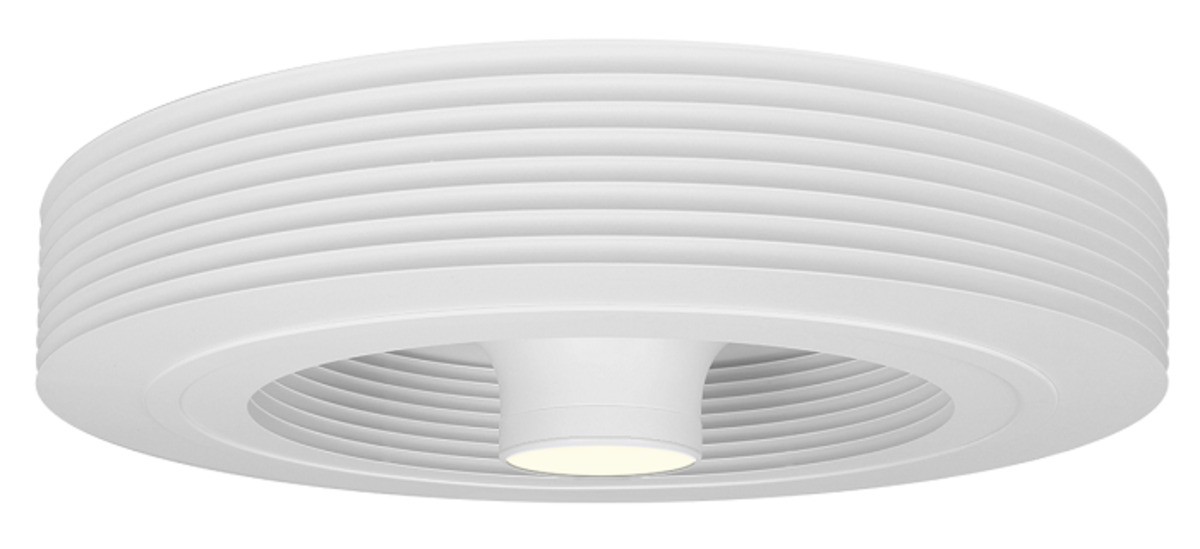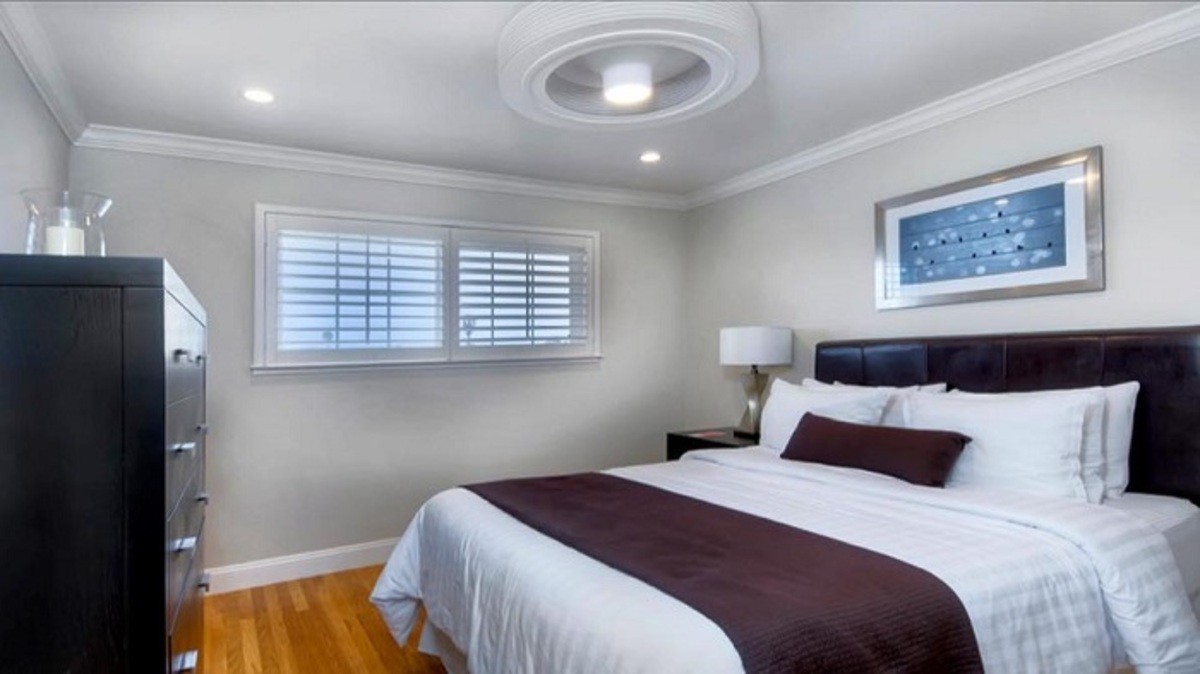Meeting with Pierre Lacarrière, entrepreneur and exclusive distributor of bladeless ceiling fans Exhale Fans in Europe. His solution for improved summer comfort in buildings? A particularly innovative blade-free air blower that meets both the requirements of the RE2020 and the comfort of users.
The temperatures reached this summer are worrying because of their magnitude but especially because of their recurrence. Faced with this unprecedented period of drought and heatwave, some cities are taking action. In Toulon in the Var region, the town hall is carrying out work this summer in several of the town’s schools and installing test equipment to cool the rooms.
How did the Exhale project come about?
A few years ago, I built my house and my wife did not want to have air-conditioning installed in it: she found it both environmentally unattractive and unpleasant because of the feeling of cold air. So we looked into installing ceiling fans in our house. We found an unusual model on a crowdfunding platform, an air blower that was not distributed in France and was just emerging in the United States. We decided to co-finance it, then to distribute it ourselves: that’s how the Exhale adventure began.
And then the project grew, because individuals were immediately interested in this product, thanks to the design and innovative aspect of Exhale compared to a classic air blower. Recently, especially with the arrival of the RE2020, professionals have also become interested.
What are the specificities of Exhale compared to other devices on the market?
Unlike a traditional ceiling fan with blades, it does not blow the air underneath it, but sucks it in from the centre and blows it out 360° to the sides, i.e. all over the room. The result is an enveloping effect that gives a particularly pleasant cooling effect. In addition, it allows you to gain a few degrees at home, up to 4, while its energy consumption is very low: less than 50 watts at maximum speed. This is a double advantage!
Exhale is also very interesting in terms of safety: there are no blades, so no risk of injury. This is a big plus for private individuals: we are thinking of bunk beds, low ceilings, children… This is also why we have equipped many public buildings such as schools or nurseries.

So your fan can be adapted to all types of housing?
The only case I would exclude would be large warehouses with public access, such as hypermarkets with high ceilings or storage centres where HVLS fans (HVLS = High Volume Low Speed) are more suitable. But apart from that, for the last two years Exhale has been taking off, we are present in private homes, colleges, hotels, nurseries, town halls, municipal buildings, multi-purpose halls… The solution can be adapted to almost anyone.
The only limit to the performance of the air blower is to have a good layout, and not to think that a single fan will be able to lower the temperature by 4°C in a 100 m² room, but on this point, we are dealing with design offices that are receptive and understand these notions.
How does the Exhale solution fit into the RE2020? How did you take the environmental aspect into account in its design?
With the RE2020, the consideration of summer comfort has evolved, with the notion of degrees per hour and defined temperature thresholds that must not be exceeded: at night, 26°C, and during the day, between 26°C and 28°C. The aim is therefore to lower the temperature by the least energy-consuming and most ecological means possible, i.e. without using air conditioning. The air blower is therefore one of the solutions that meets the requirements of the RE2020 particularly well.
Another key feature of Exhale is that it is 18 cm high: it is the flattest on the market. This makes it easier to adapt to all types of buildings, but also to comply with the safety standards in force as defined in the RE2020: no lower than 2.30m in height under the blades.

Do you plan to develop it with new features?
Beyond ecological considerations, there is a desire on the part of consumers and our customers to be more technological, more modern and connected, which is why we are working on a thermostat system. We have also proposed solutions with wired remote controls for schools. We therefore want to integrate the notion of intelligent functions, i.e. home automation, everything that will enable the fan to be controlled remotely and make it easier to use.
In short, we listen to the wishes and needs of our professional and private customers, while continuing to monitor the regulations in force.
What do you see as the future of cooling systems, especially in the light of global warming?
Whatever climate disaster scenario we face, it will have a major impact on the way we build the new and renovate the old. Professionals have already understood and integrated this, and the general public is beginning to realise it. Our energy consumption is going to change, and that includes our homes.
An air conditioning system that costs only a few hundred euros actually consumes €400 per month in electricity when it is running at full capacity. Not to mention the fact that it heats up the atmosphere outside.
So I’m relatively optimistic about awareness. Whether it will be enough, we unfortunately don’t know.
Do you have any other solutions under development that you would like to present to us?
We realised that our professional contacts: local authorities, town halls, design offices, architects, … all wanted more information on innovative products.
We are therefore in the process of expanding our product line to include other solutions to improve energy savings and respond to the problems of the new ecological regulations (RE2020) and the needs of our customers. We have the team with the technical expertise. To give you an idea, we are working on elements that allow us to test the quality of indoor air, CO2 detectors, but also Wifi wave jammers, innovative venetian blinds, filters to absorb part of the rays that enter classrooms to reduce heat…
Solutions that are not air-conditioning, but that allow to reduce energy costs and improve comfort, all while remaining affordable and easy to install.

